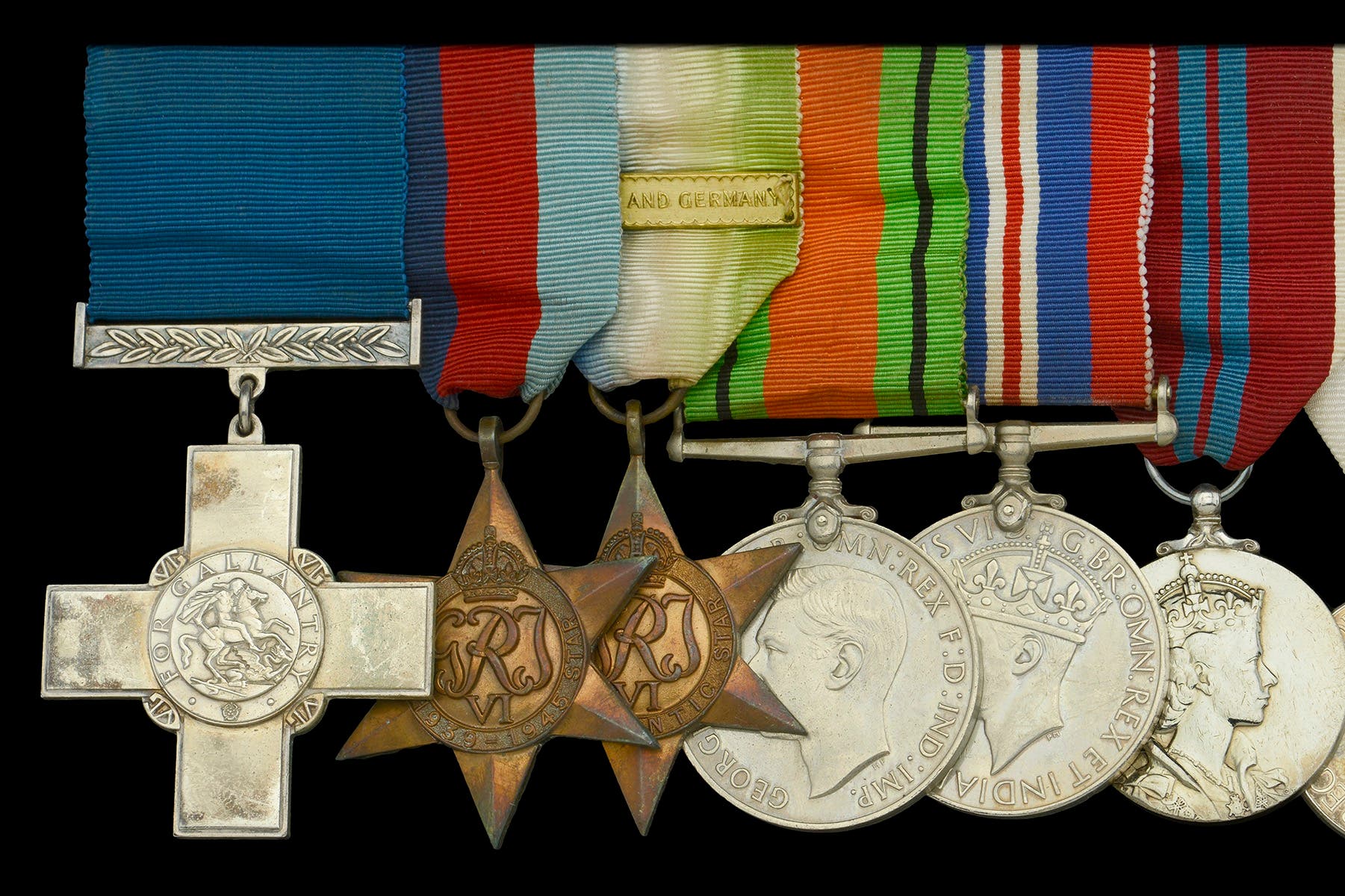Medals awarded to ‘buried alive’ Blitz hero expected to sell for up to £120,000
Sub lieutenant Jack Easton suffered a fractured skull, broken back and broken legs after the mine he was trying to defuse exploded in 1940.

Second World War medals awarded to a man who was buried alive during the Blitz are expected to sell for up to £120,000 at auction.
Sub lieutenant Jack Easton suffered a fractured skull, broken back and broken legs after the mine he was trying to defuse in an east London house exploded in 1940.
The George Cross, the highest award bestowed by the British government to civilians for non-operational gallantry, was awarded to Sub Lt Easton following the incident.
The lot, totalling seven medals awarded to Sub Lt Easton, will be offered at Noonans Mayfair auction house, west London, on April 10 and is expected to sell for between £80,000 and £120,000.
Sub Lt Easton served in the Royal Naval Volunteer Reserve during the Second World War and was trained in the disposing of unexploded mines.
Nimrod Dix, head of medal department and deputy chairman of Noonans, said: “The Second World War was really the first war that civilians were on the front line in the cities that were being attacked during the Blitz.
“As a result of this, it was decided that there was a need for a new gallantry award and the George Cross was introduced by George VI in 1940.”
He continued: “Easton was no stranger to the nerve-wracking business of mine disposal, having earlier made safe 16 such devices, including one which had crashed through the roof of the Russell Hotel in Bloomsbury and ended up hanging from the chandelier in the main dining room.
“Easton displayed pre-meditated gallantry of a very high order, and this is reflected in the estimated price for his George Cross and other medals.”
In a book titled Wavy Navy: By Some Who Served, Sub Lt Easton described the “living hell” of being buried alive following the explosion that killed his assistant and destroyed six streets in Hoxton, east London.
He was called to dismantle the parachute mine after it had crashed through the roof of a house and spoke of the moment he realised the bomb was about to explode.
Sub Lt Easton said: “Unless I got clear, I had exactly 12 seconds to live”.
He ran out of the house and flung himself “face down to the ground” behind an air raid shelter opposite the building he had been working in as the mine exploded.
The George Cross was presented to Sub Lt Easton by King George VI at Buckingham Palace on September 23 1941.
He died in Sussex in 1994, aged 88, and was described as a “witty extrovert” in his obituary in The Daily Telegraph, the auctioneers said.
Bookmark popover
Removed from bookmarks